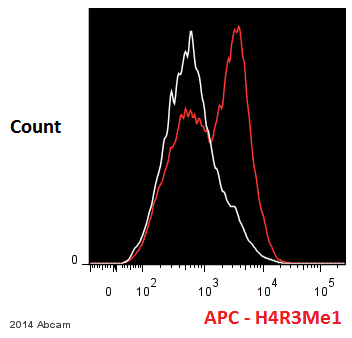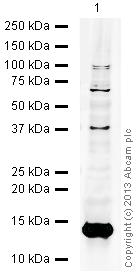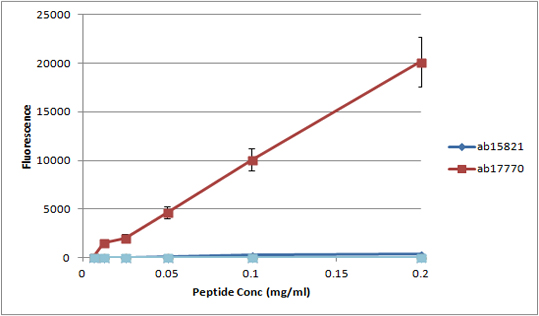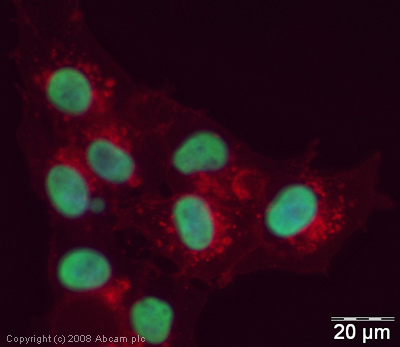Anti-Histone H4 (mono methyl R3) antibody
| Name | Anti-Histone H4 (mono methyl R3) antibody |
|---|---|
| Supplier | Abcam |
| Catalog | ab17339 |
| Prices | $380.00 |
| Sizes | 100 µg |
| Host | Rabbit |
| Clonality | Polyclonal |
| Isotype | IgG |
| Applications | WB DB ELISA IHC-P ICC/IF ICC/IF Array |
| Species Reactivities | Human, Mouse, Rat, Bovine, Pig |
| Antigen | Synthetic peptide conjugated to KLH derived from within residues 1 - 100 of Human Histone H4, mono methylated at R3 |
| Blocking Peptide | Human Histone H4 (mono methyl R3) peptide |
| Description | Rabbit Polyclonal |
| Gene | HIST4H4 |
| Conjugate | Unconjugated |
| Supplier Page | Shop |
Product images
Product References
N-alpha-terminal acetylation of histone H4 regulates arginine methylation and - N-alpha-terminal acetylation of histone H4 regulates arginine methylation and
Schiza V, Molina-Serrano D, Kyriakou D, Hadjiantoniou A, Kirmizis A. PLoS Genet. 2013;9(9):e1003805.
Regulation of histone modification and chromatin structure by the p53-PADI4 - Regulation of histone modification and chromatin structure by the p53-PADI4
Tanikawa C, Espinosa M, Suzuki A, Masuda K, Yamamoto K, Tsuchiya E, Ueda K, Daigo Y, Nakamura Y, Matsuda K. Nat Commun. 2012 Feb 14;3:676.
Global histone modification patterns as prognostic markers to classify glioma - Global histone modification patterns as prognostic markers to classify glioma
Liu BL, Cheng JX, Zhang X, Wang R, Zhang W, Lin H, Xiao X, Cai S, Chen XY, Cheng H. Cancer Epidemiol Biomarkers Prev. 2010 Nov;19(11):2888-96. doi:
JMJD6 is a histone arginine demethylase. - JMJD6 is a histone arginine demethylase.
Chang B, Chen Y, Zhao Y, Bruick RK. Science. 2007 Oct 19;318(5849):444-7.




